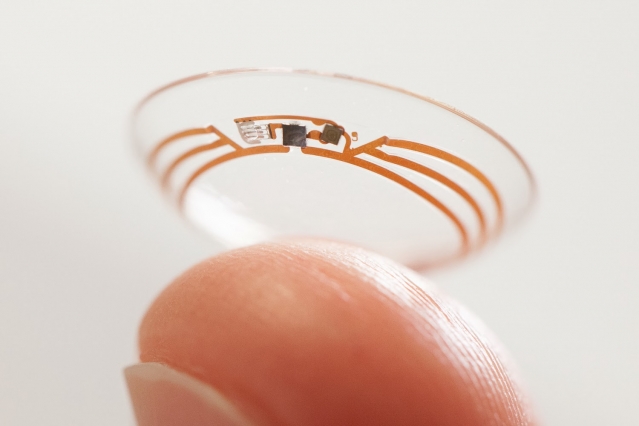
Google unveils a contact lens that monitors glucose levels in tears, something millions of diabetics currently have to draw their own blood to check
"We're testing a smart contact lens that we built that measures the glucose levels in tears using a tiny wireless chip and a miniaturised glucose sensor," explained the Google X project leader for the smart contact lens, Brian Otis.
The device, which looks like a typical contact lens, contains two twinkling glitter-specks that are loaded with tens of thousands of miniaturised transistors and is ringed with a hair-thin antenna.
"We've had to work really hard to develop tiny, low-powered electronics that operate on low levels of energy and really small glucose sensors," Mr Otis said at Google's Silicon Valley headquarters.
Google unveils a contact lens that monitors glucose levels in tears, something millions of diabetics currently have to draw their own blood to check
"We're testing a smart contact lens that we built that measures the glucose levels in tears using a tiny wireless chip and a miniaturised glucose sensor," explained the Google X project leader for the smart contact lens, Brian Otis.
The device, which looks like a typical contact lens, contains two twinkling glitter-specks that are loaded with tens of thousands of miniaturised transistors and is ringed with a hair-thin antenna.
"We've had to work really hard to develop tiny, low-powered electronics that operate on low levels of energy and really small glucose sensors," Mr Otis said at Google's Silicon Valley headquarters.





